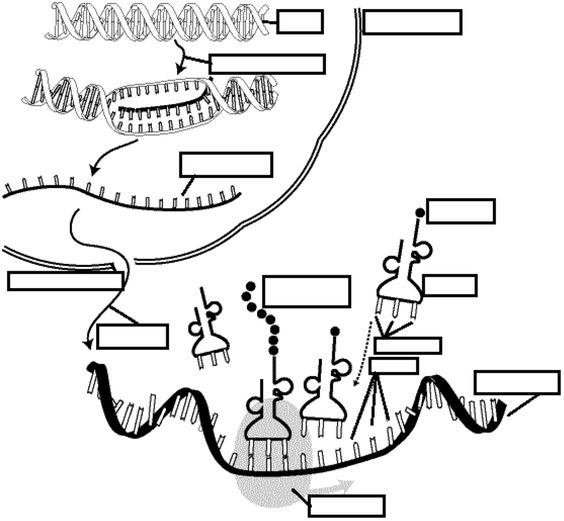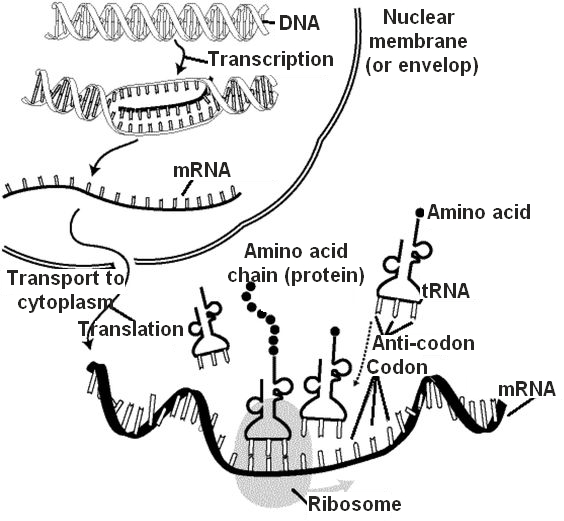espace pédagogique > enseignements transversaux > DNL accueil > enseignement
Different stages of a protein synthesis
mis à jour le 06/05/2020
Ressource à destination des élèves de 1ère spécialité SVT.
Ouverture culturelle : Le Projet du génome humain (HGP), le fruit d’une équipe internationale de chercheurs.
https://www.genome.gov/human-genome-project
mots clés : protein synthesis, genetic, code, audio, DNL
Transmission, variation et expression du patrimoine génétique
L’expression du patrimoine génétique
Durée estimée: 1h00
- Make a series of drawings (cartoons) in the context of the story to explain the different stages of a protein synthesis.
- Fill in the diagram “protein synthesis” thanks to the information provided by the story.
Listening
 Download the audio file
Download the audio file Audio from the website : https://www.genome.gov/25520211/online-education-kit-our-molecular-selves (Il n'est plus possible de visionner la vidéo sur ce site externe)
The Human Genome Project is a way of exploring our molecular selves.
Almost all of our cells - the muscle cells that let us smile, the brain cells that perceive the humor in things, the cells of our eyes that take it all in - contain a complete set of all our genes, the genome.
If we could journey inside ourselves, into a cell, we would see 23 pairs of chromosomes packed into a nucleus.
Each chromosome contains a long coil of DNA. If all the chromosomes were unwound, the DNA in just one of our cells would stretch 6 feet long. The DNA double helix contains four kinds of building blocks - an A always pairs with a T, a C with a G.
DNA contains information to make every part of our bodies with its 4-letter language. Each of our thousands of genes codes for a specific part. RNA polymerase copies the information in a gene into a messenger molecule, messenger RNA.
The building blocks of messenger RNA and DNA are called bases. The bases on one strand of the DNA specify the order of bases on the new strand of messenger RNA.
The DNA always stays inside the nucleus, but messenger RNA travels out into the cytoplasm. There, a protein-making machine called a ribosome can read messenger RNA to make a particular protein.
Every three bases of the messenger RNA molecule codes for an amino acid. Proteins are made of amino acids. tRNA molecules help translate the language of DNA and RNA into the language of proteins. tRNA molecules bring the right amino acids that the ribosome links together to make a protein.
Proteins are the laborers. Some form structures like tendons and hair, others perceive light, sense and flavors, control chemical reactions and carry messages between cells. To understand our molecular selves, scientists have read the three billion letters making up the DNA in the human genome.
Different sets of genes, interacting with complex environmental factors, influence things like our looks, personalities, and risks for diseases like cancer and heart disease.
A growing understanding of our genes and all they do will help us understand the complexity and the wonder of life.
A simple friendship. A sunny day. Ah, life.


Arnaud THOMAS, Professeur de SVT - Lycée d'Avesnière - LAVAL (53)
éditeur(s) :DNL, sections int, euro et bi-nationales - Rectorat de l'Académie de Nantes

 s'identifier
s'identifier
 portail personnel ETNA
portail personnel ETNA
